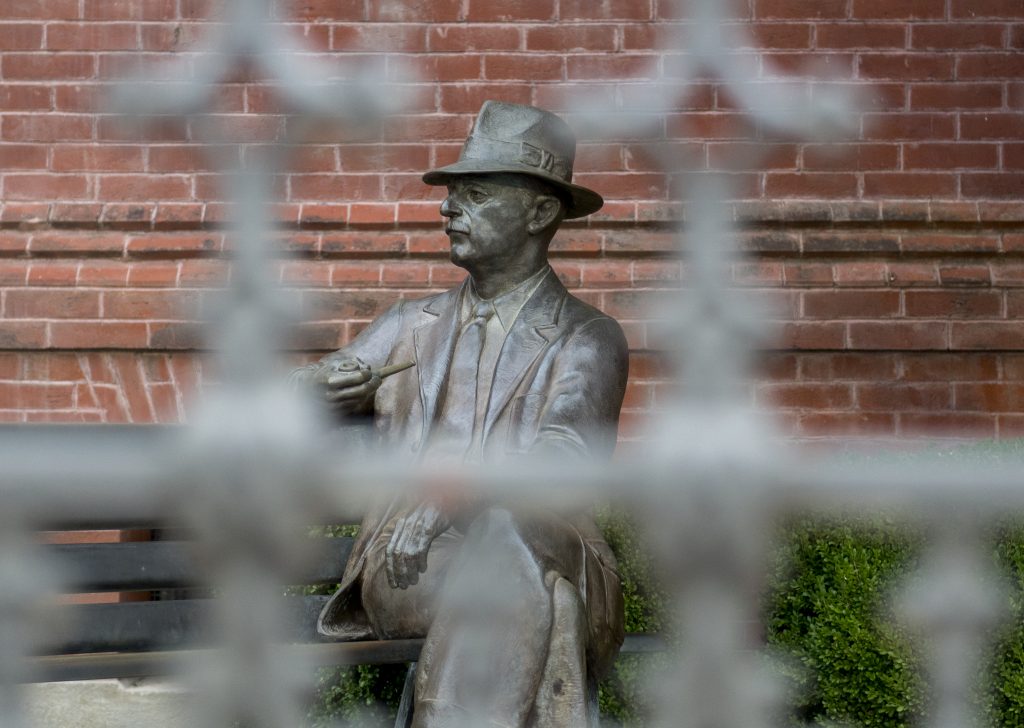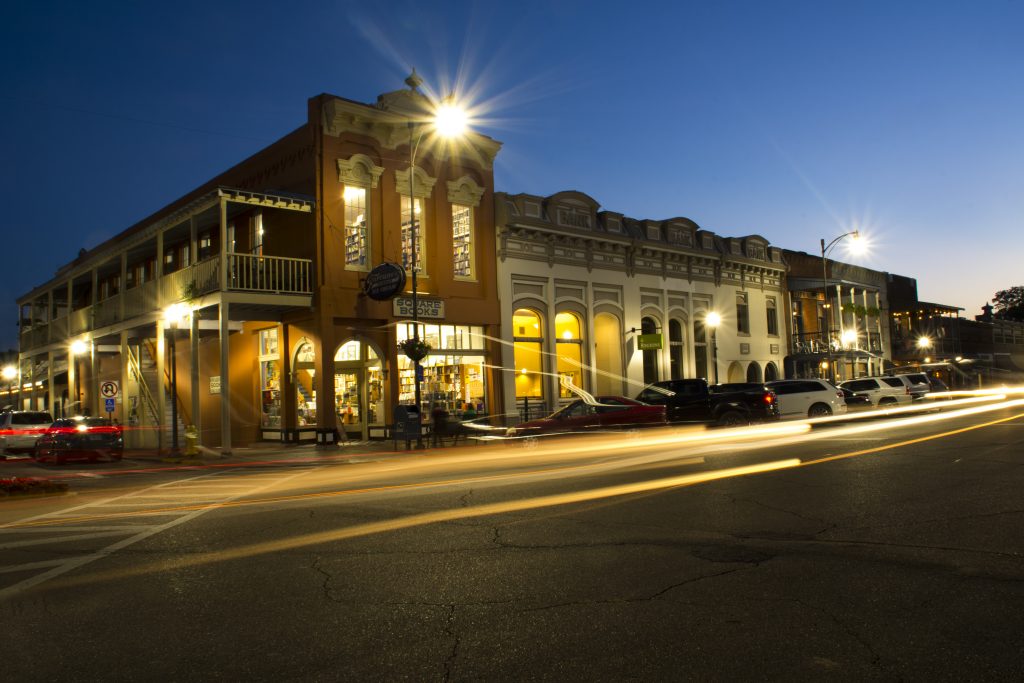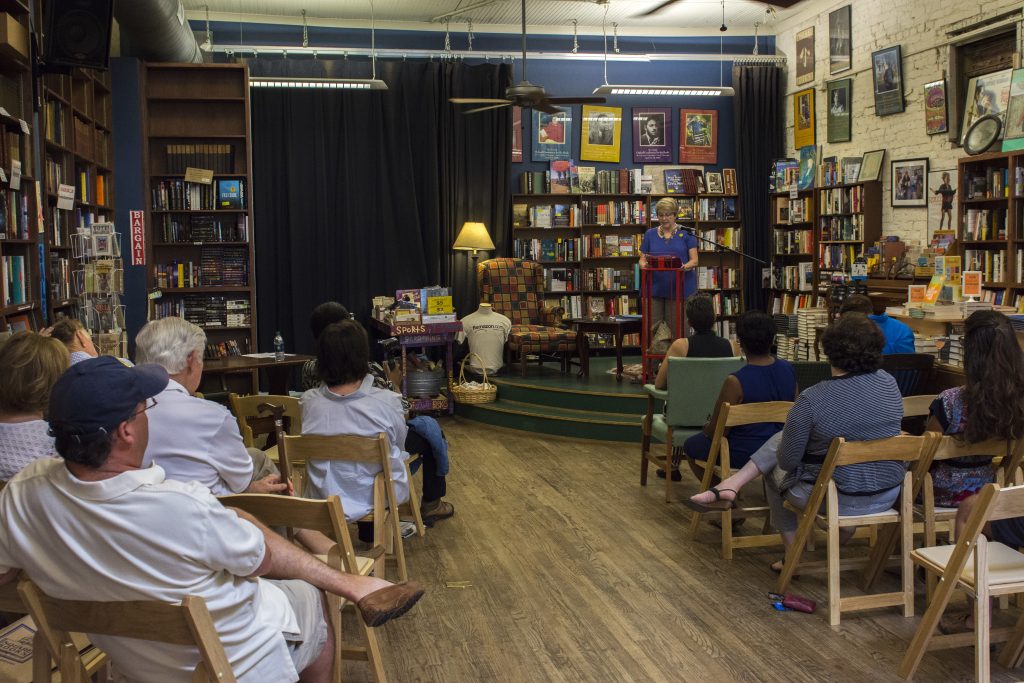Amongst demanding classes, social obligations and football games that shut the town down, it’s easy to get bogged down and forget everything the campus and Oxford have to offer.
One of the incredible things that Oxford boasts is a continuing legacy of serving as a home and source of inspiration for dozens of writers.
There’s the most famous literary Oxonian, Nobel Prize-winning William Faulkner, who spun the stories he grew up around into elaborate works of fiction. There’s Larry Brown, a firefighter who began writing taut prose that sounds like a dirt road deep in Lafayette County late at night and smells like catfish frying in a cast iron skillet. And there’s Jesmyn Ward, a former Grisham writer-in-residence who won both the 2011 and 2017 National Book Awards for fiction. These are just some of the many writers who have marked their names on Oxford and on whom Oxford has made its mark.
With just a little bit of effort, students can make sure to experience the great literature and community that Oxford has fostered.

William Faulkner statue on The Square. Photo by Christian Johnson
The University
As a new student or a more experienced one who just wants to soak up as much of Oxford as possible, one can get a great sampling of the Oxford literary community’s offerings without even leaving campus.
First, check out the English department’s website to see upcoming events. Faculty members and guests alike will often be on campus reading from their own works, discussing the works of other authors or talking in panels about other topics.
Those interested should also look online to see which faculty members have recently published books and find a copy to read. Going to school at Ole Miss also allows you the opportunity to enroll in classes taught by these crucial contemporary authors. You could learn how to craft a deeply personal essay from Kiese Laymon, whose book “Heavy: An American Memoir” comes out this October, or how to write a screenplay from Chris Offutt, a former writer for HBO’s “True Blood.”
Another of these faculty members is Beth Ann Fennelly, an English professor and the current poet laureate of Mississippi. She came to Oxford in 2001 when her husband and fellow professor Tom Franklin was selected as the Grisham writer-in-residence. The two of them quickly fell in love with Oxford’s meld of past and present literature.
“It has both incredible tradition and an equally vibrant contemporary scene,” Fennelly said. “It’s not as if the town is full of dusty ghosts and nothing interesting is going on, nor is it like we just invented this stuff last week.”
In spring 2018, Fennelly taught a section of “Studies in Contemporary Literature” that focused on works written by faculty authors, Grisham writers-in-residence and literary visitors of campus and Oxford.
This class is just one offerings that relates directly to Oxford’s literary community. The English department regularly offers a course on Faulkner’s writing as well as courses in Southern literature that include works by Faulkner, Ward or Willie Morris on their syllabi.
The university’s department of archives and special collections, located on the third floor of the library, is open from 8 a.m. to 5 p.m. on weekdays. After a short registration process, readers can browse local authors’ original photographs, letters, manuscripts, publication ephemera, notebooks and more.
“You can see the humanity in the people behind the published works. You can see the struggles that a lot of authors have to come up with that finished product,” said Jennifer Ford, head of the Department of Archives and Special Collections. “You can come and see the handwriting, the correspondence, the things these people were reading and the way they approached their writing.”
Some of the authors whose materials are available in the archives include Brown, Faulkner, Fennelly, Franklin and Barry Hannah. Catalogs of Faulkner’s materials and all literary collections can be found on the library website.
Besides its archival collections, the department also curates two exhibits. One features materials donated by Seymour Lawrence, a publisher who worked with Hannah, Kurt Vonnegut, Tim O’Brien and other important 20th century authors. The Faulkner Room features one of several rotating exhibits and also serves as the location for the archives’ brown bag lectures, which begin on August 23.

Square Books attracts crowds even late at night. File photo by Christian Johnson
Square Books
Eventually, you’re going to want to visit Oxford’s iconic bookstores: Square Books, Off Square Books and Square Books, Jr. Located within 100 feet of each other, these three bookstores are all owned and operated by Richard and Lisa Howorth.
The main store was founded in 1979 and now boasts large history, poetry and fiction sections, with special emphasis on Southern literature and works by Oxford-based writers. Upon walking in, you’ll see a huge wall devoted solely to Mississippi authors that is surrounded by tables of recent releases. Head upstairs to peruse the poetry, history, music and Southern studies sections as well as the ever-popular Faulkner shelf.
Lyn Roberts, general manager of Square Books, said the store’s purpose in Oxford stretches beyond merely selling books. To her, the store serves as a place of cultural liveliness and discovery on the Square.
“Square Books is as much an environment as it is a store,” she said. “I think you can go in there and talk to our booksellers, who are very knowledgeable. Talk to people about what your likes and dislikes are to get recommendations. It’s a way to find books and discover.”

Jane Hearn discusses her book “A Past That Won’t Rest” at Off Square Books on Tuesday. The book is a collection of Hearn’s late husband Jim Lucas’ photographs during the Civil Rights Movement. Photo by Christian Johnson
After browsing the main store, you can explore shelves of children’s and young adult books at Square Books, Jr. or cookbooks, art books and used books at Off Square Books. The latter also serves as the backdrop for book signings, readings and other author events.
“There are authors who are worth coming to see, and years down the road you’ll think, ‘Wow, I saw that person,’” Roberts said. “When I was a student, I was all about class and staying on campus and didn’t go here to many of the lectures, but I wish I had.”
Thacker Mountain Radio Hour, a free show featuring guest authors and musicians, takes place at Off Square Books. Hosted by Oxford’s own Jim Dees and featuring house band the Yalobushwhackers, this event airs at 6 p.m. on most Thursdays throughout the school year and has featured music ranging from aging Mississippi bluesmen to Australian indie bands as well as writers from faculty author Derrick Harriell to British essayist Martin Amis. A full schedule of events can be found online at thackermountain.com.
During the first week of classes alone, Square Books will host authors James McLaughlin with “Bearskin” on Monday, Charlie Spillers with “Whirlwind” on Tuesday and David Joy in conversation with journalist Ace Atkins about Joy’s novel “The Line That Held Us” on Thursday. All events will be at 5 p.m. at Off Square Books.
Make sure to look out for details about the Oxford Conference for the Book, which will take place from March 27-29, 2019, and will be hosted by both Square Books and the university. This three-day event typically includes a mix of readings by contemporary authors, panel discussions with scholars and talks about the craft of writing.
Faulkner’s Yoknapatawpha
For a glimpse into Oxford’s literary history, a visit Faulkner’s former home, Rowan Oak, is a must. This Greek revival house, which was built in the 1840s and was purchased by Faulkner in 1930, is located just south of the Square on Old Taylor Road. Its grounds are also accessible via the Bailey’s Woods Trail, which begins on campus at the University Museum.
The house itself is open weekly from 10 a.m. to 4 p.m. Tuesday through Saturday and from 1-4 p.m. Sunday and is free for students to tour. Inside, you can explore rooms filled with original furniture and still show signs of both Faulkner’s work and his family’s life. Rowan Oak also serves as a museum which displays copies of Faulkner’s books, media coverage of his life and other objects from the house and grounds.
Outside of the house on any given sunny day, there are at least a few students sitting in the Adirondack chairs and talking quietly or reading. Rowan Oak’s grounds are open daily from dawn to dusk.
The unique thing about Faulkner is that apart from the grounds of Rowan Oak, the legacy of his work is visible in the landscapes and people of Oxford and Lafayette County, which served as his greatest inspiration.
This “little postage stamp of native soil,” as Faulkner called it, provided him with the aging Old South families, rough-hewn settlers and rural nomads that populate his fictional Yoknapatawpha County. Many of the places Faulkner writes about – including the courthouse on the Square and the Thompson-Chandler House on South 13th Street, both of which appear in “The Sound and the Fury” – are still around and can be found with a bit of online searching.
Fennelly said if there was just one thing students hoping to experience Oxford’s literary legacy should do, they should visit Faulkner’s grave (located in St. Peter’s Cemetery on Black Diamond Road) to pay their respects.
“They should bring a bottle of brown liquor (if they’re over 21) to Faulkner’s grave and have a toast with their literary friends and give old Bill a sip,” she said.






